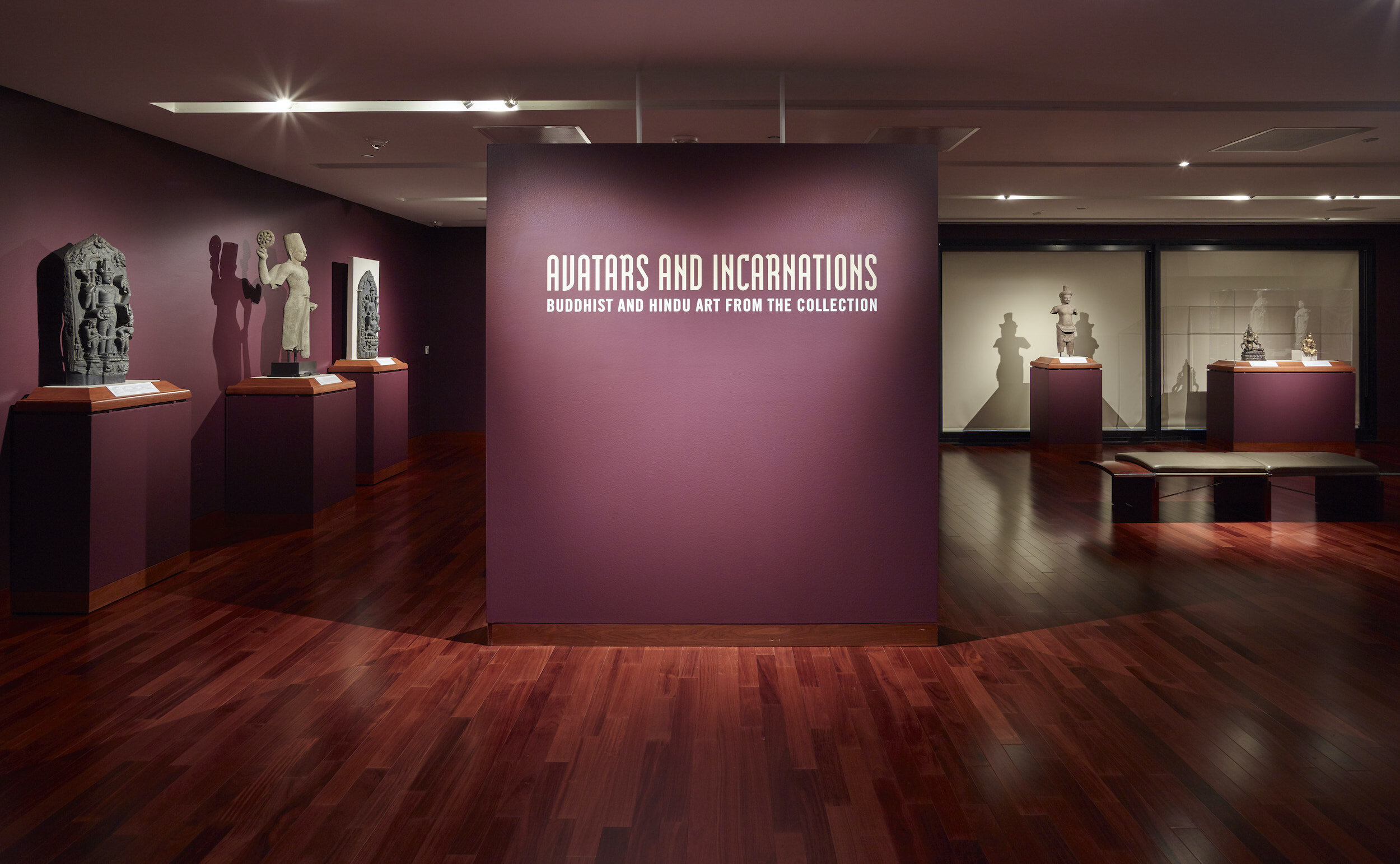
Avatars and Incarnations: Buddhist and Hindu Art from the Collection
On view September 28, 2018 – February 24, 2019 at the Crow Museum of Asian Art
This exhibition explores the concept of divine avatars in Hindu and Buddhist art represented in the museum’s collection. In Hinduism and Buddhism, the concept of an avatar refers to the incarnation or physical manifestation of a deity, spirit, or abstract quality in human or animal form. Each avatar is meant to counteract a particular problem, evil, or suffering in the world. Different avatars often represent specific aspects of greater transcendent deities, and thus serve as useful focal points for devotion.
Over centuries, Hinduism and Buddhism have progressively added many legends, ceremonies, physical disciplines, practices, and schools of thought. Today, there are many different ways to be a Hindu or a Buddhist. That expansion of thought and practice extends to deities; together, the two religions collectively embrace perhaps tens of thousands of gods and goddesses in a variety of forms. The artistic and visual representations of these deities change in style and appearance across time and place — the same deity may look completely different depending on the context. Through these works of art, we invite you to contemplate the endless variety of these divine Hindu and Buddhist figures.
Avatars and Incarnations: Buddhist and Hindu Art from the Collection is organized by the Crow Museum of Asian Art and curated by Jacqueline Chao.
Header Image: Stele with Varaha, North India, Pala period (c. 730-1197), c. 11th century. Stone, likely phyllite or schist. Crow Museum of Asian Art, 1982.52. Courtesy of the Crow Museum of Asian Art.
Installation photography by Chad Redmon, Courtesy of the Crow Museum of Asian Art.





